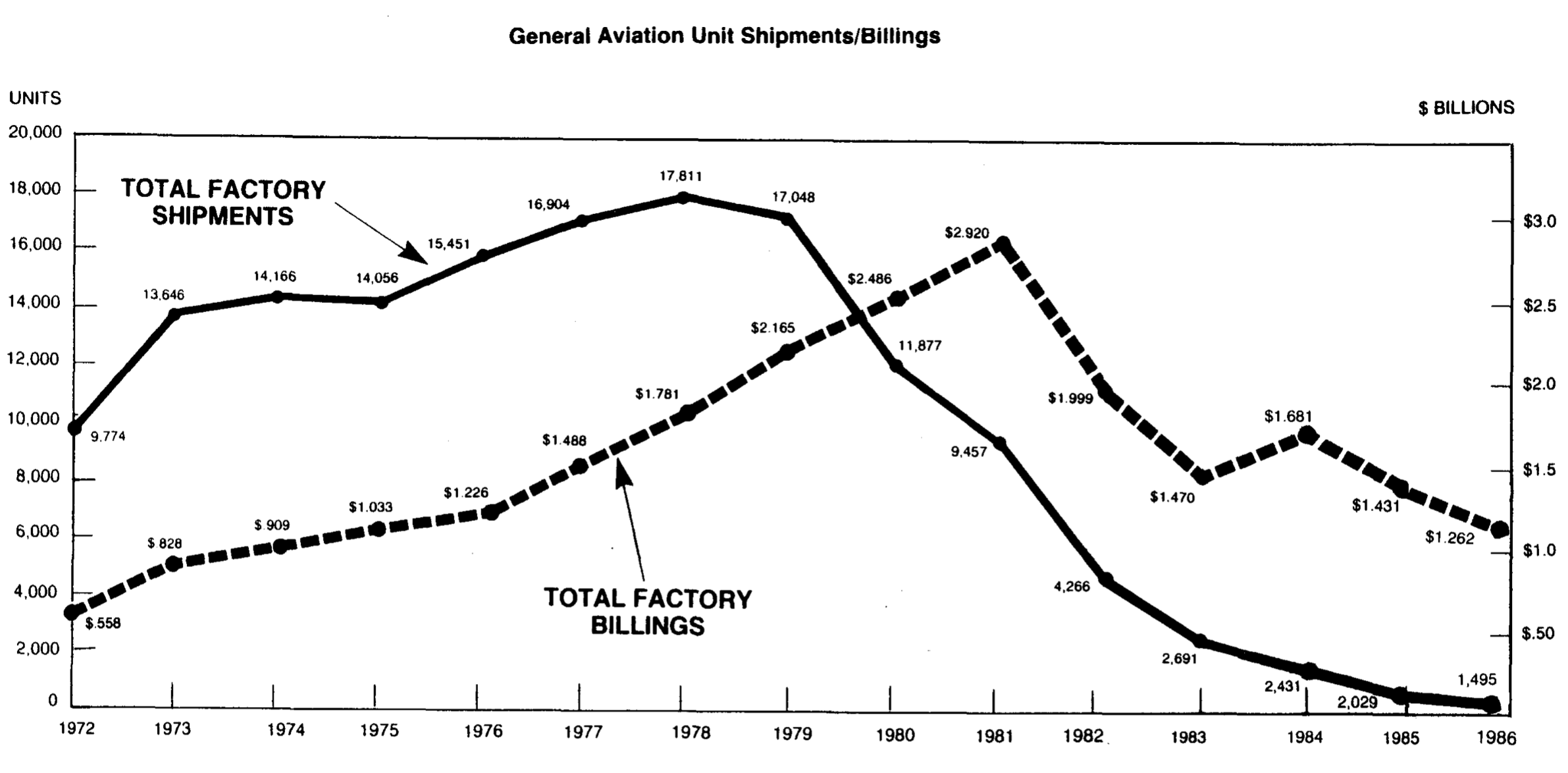Surviving in Chaos
Following record-breaking delivery levels year to year in the late 1970s, the general aviation market began a sharp decline in the early 1980s and by the mid-1980s had suffered a near-total collapse.

Consequently, single-engine aircraft deliveries slowed to almost nothing and operations suffered a 75% reduction in production, people, and physical property within eight years. While hindsight points to several contributing factors, 2 skyrocketing product liability costs chief among them, annual forecasts about how bad it would get offered little indication as to the futility of initiatives to stop, much less reverse, the downturn.
Committed to “surviving in chaos,” the company adopted a culture of near-desperate experimentation with new management, new directions, new plans, new organization relationships, internally and externally—concluding with its acquisition by a deep-pocketed company in a related industry. In terms of organizational viability, this approach worked as the entity stayed afloat and continues on today.
Given the disruptive and even traumatic nature of the experience left indelible impressions on the psyches of everyone throughout the organization, it presented each with a seemingly infinite range of “forks in the road” from which to chart personal and professional paths forward. For some, those choices brought unexpected and ignominious ends to what had been successful careers. For many, the alternatives led to abrupt changes in jobs and workplaces—often to comparatively unfavorable positions—just to remain employed. But for others, the pathways opened up new opportunities that would not have existed otherwise. I was fortunate enough to encounter more promising forks in the road…and become an example of Thriving on Chaos. 3
- General Aviation Manufacturers Association (GAMA). “General Aviation Statistical Databook.” Washington, D.C., 1987, 5-6. https://gama.aero/documents/general-aviation-statistical-databook-1987-edition/. [return]
- TRUITT, LAWRENCE J., and SCOTT E. TARRY. “The Rise and Fall of General Aviation: Product Liability, Market Structure, and Technological Innovation.” Transportation Journal, vol. 34, no. 4, 1995, pp. 52–70. JSTOR, www.jstor.org/stable/20713254. Accessed 14 May 2021. [return]
- Peters, Thomas J. Thriving on Chaos: Handbook for a Management Revolution. 1st ed. New York: Knopf : Distributed by Random House, 1987. [return]
